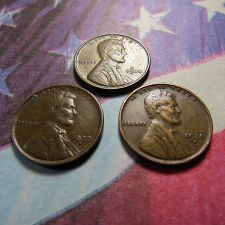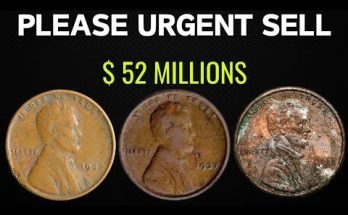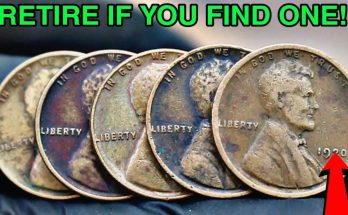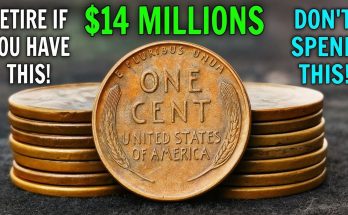Coin Value Price Chart for Lincoln Wheat Cent 1C. Lookup Coin values for Good, Very Good, Fine, Very Fine, Brilliant Uncirculated & Proof conditions and MS grade. How much Lincoln Wheat Cent are worth. Buy & Sell. Coins for sale for Lincoln Wheat Cent type items.
The Enduring Legacy of the Lincoln Wheat Cent: A Collector’s Guide
The Lincoln Wheat Cent, minted from 1909 to 1958, is arguably the most recognizable and beloved coin in American history. As a tribute to the 100th anniversary of Abraham Lincoln’s birth, its release marked a significant departure from previous designs by being the first circulating U.S. coin to feature a real person rather than a depiction of Liberty. This classic one-cent piece, with its distinctive two stalks of wheat on the reverse, serves as a cornerstone for countless numismatic collections and a nostalgic reminder of a bygone era. Understanding its history, key dates, and grading is essential for anyone interested in its value.
History and Design
President Theodore Roosevelt initiated the redesign of the cent, selecting Lithuanian-American sculptor Victor David Brenner for the project. Brenner’s design featured a dignified profile of Abraham Lincoln on the obverse (front), inspired by a plaque he had created years earlier. The obverse also includes the inscriptions “IN GOD WE TRUST” and “LIBERTY” and the date.
The coin’s reverse (back) design, which gives it the “Wheat Cent” moniker, showcases two stalks of durum wheat flanking the central inscriptions “ONE CENT” and “UNITED STATES OF AMERICA.” The top of the coin bears the motto “E PLURIBUS UNUM.” A brief controversy arose at the coin’s initial release in 1909 due to Brenner’s prominent initials, V.D.B., at the bottom of the reverse. Public outcry led to their swift removal, making the 1909-S V.D.B. a highly sought-after and low-mintage variety. The initials were later restored, in a smaller form, on the obverse beneath Lincoln’s shoulder in 1918.
During World War II, a critical copper shortage led to a radical change in the coin’s composition. For a single year, in 1943, cents were made from zinc-coated steel, giving them a silver-like appearance and making them easy to identify. The U.S. Mint reverted to a modified bronze composition from 1944-1946 using recycled ammunition casings before returning to the pre-war composition in 1947.
Key Dates, Mint Marks, and Varieties
A coin’s value is often determined by its mintage, or the number of coins produced in a given year and at a specific mint. The mint mark (a small letter below the date) indicates where the coin was struck: “D” for Denver, “S” for San Francisco, and a blank space for Philadelphia. Coins with low mintage figures are known as “key dates” and are significantly more valuable than common ones.
Some of the most important key dates and varieties in the series include:
- 1909-S V.D.B.: With a tiny mintage of just 484,000, this is the most famous and valuable coin in the series. Its low production, combined with high demand, makes it a true prize for any collector.
- 1914-D: This coin has the third-lowest mintage of the series at 1,193,000, making it a very valuable key date, especially in higher grades.
- 1931-S: The second-lowest mintage at just 866,000, this coin is a rare find from the Great Depression era when coin production was low.
Other notable varieties and error coins command significant value:
- 1922 “No D”: Due to a grease-filled die at the Denver Mint, some cents were struck without a visible “D” mint mark. These are a well-known error variety.
- 1955 Doubled Die Obverse: A striking error caused the date and some lettering to appear doubled, creating one of the most famous and dramatic error coins in U.S. numismatics.
- 1943 Copper Cents & 1944 Steel Cents: A handful of these error coins were mistakenly struck on the wrong planchets (blanks) during the metal changeover years of WWII. They are exceptionally rare and can be worth hundreds of thousands of dollars
Grading and Condition
A coin’s condition, or grade, is the single most important factor in determining its value. The Sheldon scale, from 1 (Poor) to 70 (Perfect), is used to assess a coin’s state of preservation. Uncirculated coins, designated as Mint State (MS), are those that have never entered circulation and retain their original mint luster.
For copper cents, a crucial part of the grade is its color designation:
- BN (Brown): The coin’s surface is predominantly brown due to oxidation, common for most circulated cents.
- RB (Red/Brown): A mix of red and brown tones, indicating some of the original copper color remains.
- RD (Red): The coin retains its original, vibrant red-orange color, making it the most desirable and valuable state.
The subtle differences in grading can mean a huge jump in value. For example, a common 1944 Lincoln Cent might be worth a few cents in Brown but several dollars or more in a high-grade Red condition.
Price Charts and Coin Values
The value of a Lincoln Wheat Cent can range from a few cents for common, heavily circulated pieces to hundreds of thousands of dollars for the rarest, highest-graded examples. Price charts and coin value guides, such as those published by PCGS or NGC, are indispensable tools for collectors. These resources provide up-to-date pricing based on market data for every year, mint mark, and grade, including common and uncirculated prices. For instance, while a 1950s cent might be worth its face value, a Mint State 1914-D or 1931-S can fetch thousands. The rarest error coins, like the 1943 bronze cent, have sold for astonishing sums at auction, cementing their legendary status in the hobby. Ultimately, the market for Lincoln Wheat Cents is vibrant and dynamic, offering a wide range of opportunities for both novice and experienced collectors.



